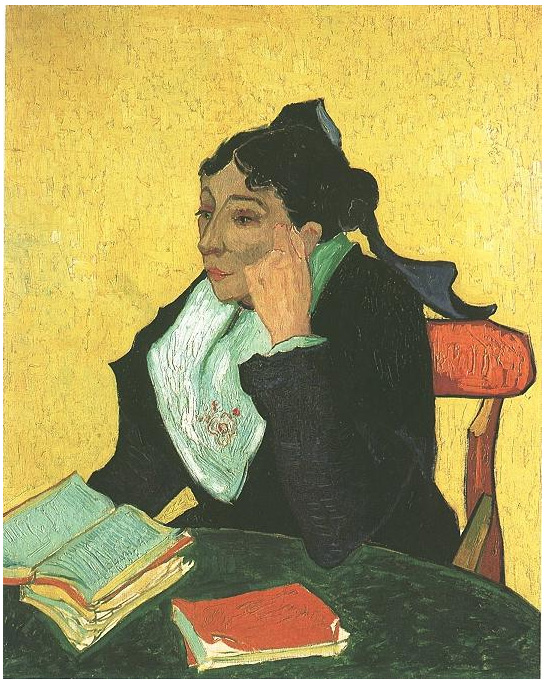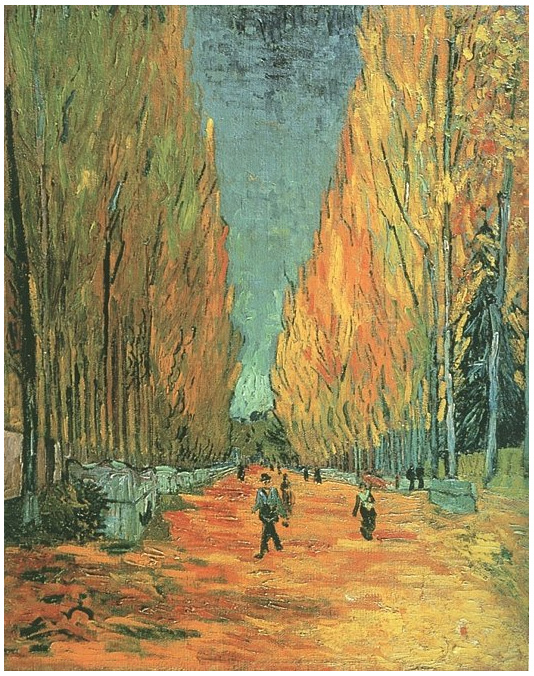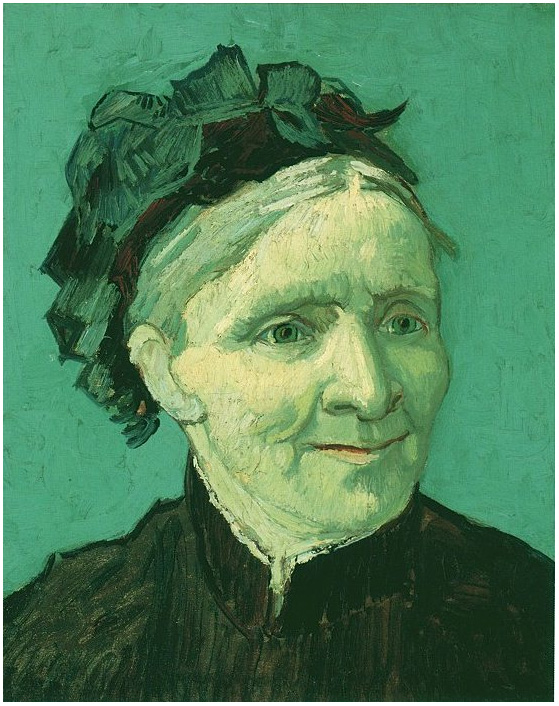This was one of six similar paintings executed by Van Gogh of Madame Ginoux.
From howstuffworks.com: The portrait depicts Marie Ginoux, proprietress of the Café de la Gare on the Place Lamartine, who came to the Yellow House to sit for Vincent van Gogh and Paul Gauguin in early November.
Marie Ginoux wore traditional Arlesienne costume and posed with an umbrella on the table before her. Vincent van Gogh completed one painting during the hour-long session, while Gauguin worked on a drawing. Vincent later made this version of his portrait, replacing the umbrella with a pile of books.
In a letter to his brother Theo in January 1889, Van Gogh writes briefly about this painting:
Did you during your hasty visit see the portrait of Mme. Ginoux in black and yellow? That portrait was painted in three-quarters of an hour. I must stop for the moment.
M. & Mme. Ginoux were friends of Van Gogh who ran the café which he eventually made famous in a painting entitled Le Café de Nuit and where he lodged when he first arrived in Arles. He later moved to the "yellow house" in which he and Gaugin lived for a time, another place in Arles he immortalized on canvas.




